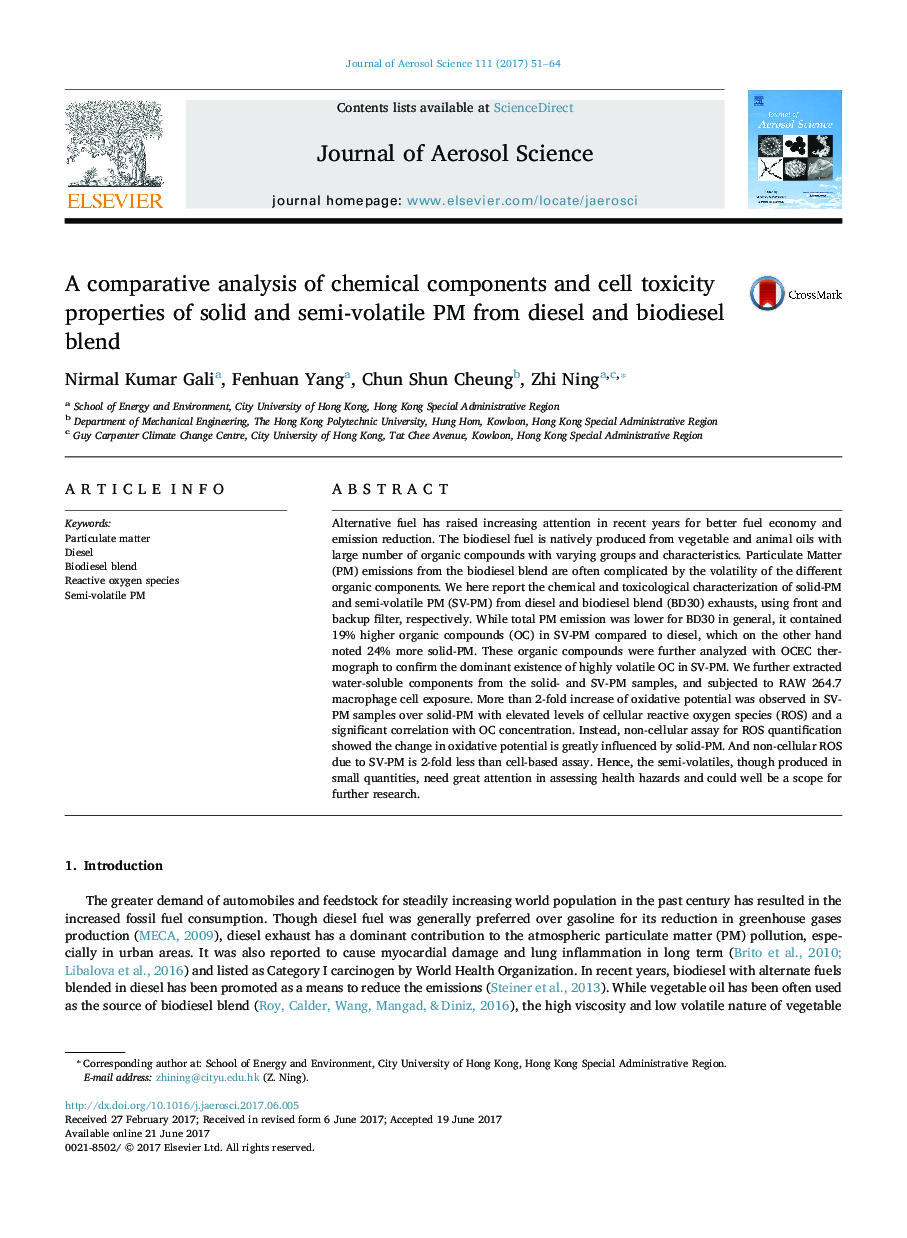| Article ID | Journal | Published Year | Pages | File Type |
|---|---|---|---|---|
| 5753935 | Journal of Aerosol Science | 2017 | 14 Pages |
Abstract
Alternative fuel has raised increasing attention in recent years for better fuel economy and emission reduction. The biodiesel fuel is natively produced from vegetable and animal oils with large number of organic compounds with varying groups and characteristics. Particulate Matter (PM) emissions from the biodiesel blend are often complicated by the volatility of the different organic components. We here report the chemical and toxicological characterization of solid-PM and semi-volatile PM (SV-PM) from diesel and biodiesel blend (BD30) exhausts, using front and backup filter, respectively. While total PM emission was lower for BD30 in general, it contained 19% higher organic compounds (OC) in SV-PM compared to diesel, which on the other hand noted 24% more solid-PM. These organic compounds were further analyzed with OCEC thermograph to confirm the dominant existence of highly volatile OC in SV-PM. We further extracted water-soluble components from the solid- and SV-PM samples, and subjected to RAW 264.7 macrophage cell exposure. More than 2-fold increase of oxidative potential was observed in SV-PM samples over solid-PM with elevated levels of cellular reactive oxygen species (ROS) and a significant correlation with OC concentration. Instead, non-cellular assay for ROS quantification showed the change in oxidative potential is greatly influenced by solid-PM. And non-cellular ROS due to SV-PM is 2-fold less than cell-based assay. Hence, the semi-volatiles, though produced in small quantities, need great attention in assessing health hazards and could well be a scope for further research.
Related Topics
Physical Sciences and Engineering
Earth and Planetary Sciences
Atmospheric Science
Authors
Nirmal Kumar Gali, Fenhuan Yang, Chun Shun Cheung, Zhi Ning,
